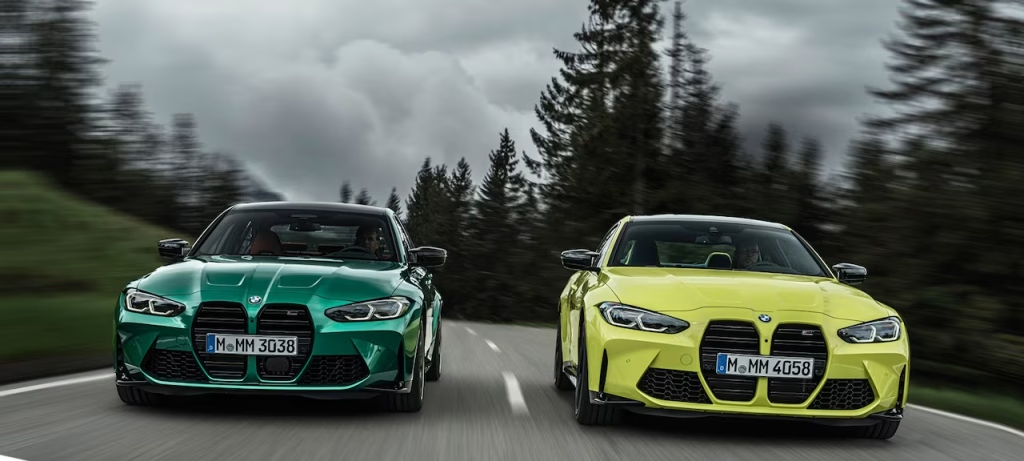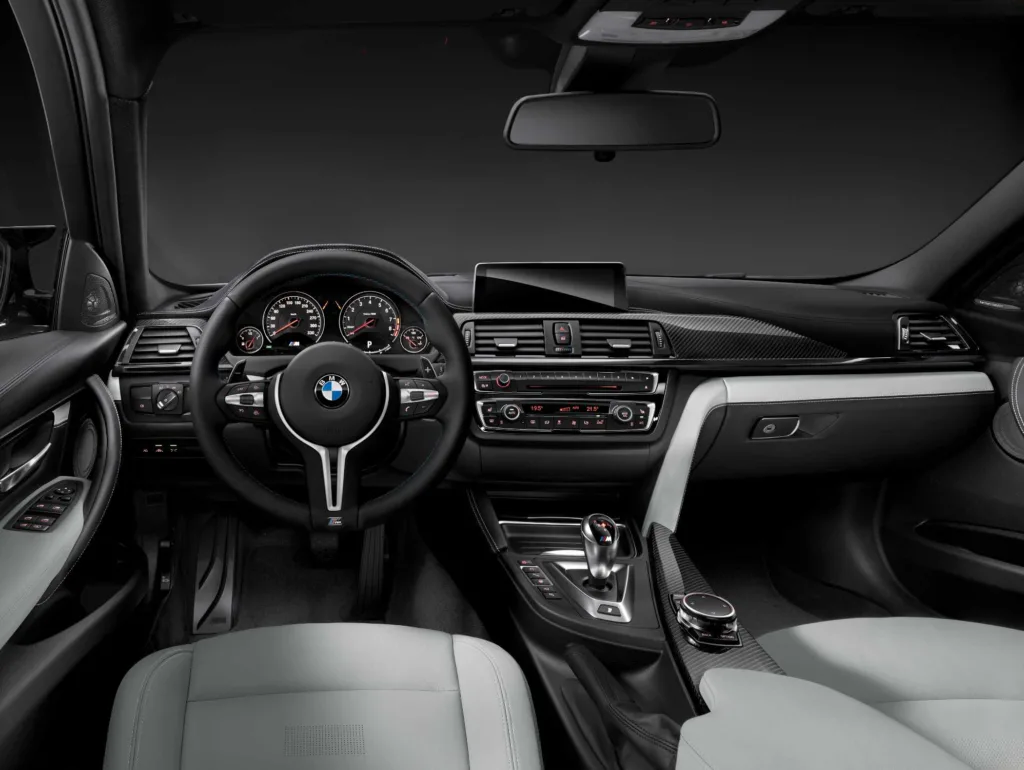What is the Difference Between the BMW M3 and M4?

BMW’s M division has long stood for performance, precision, and passion. Among its most iconic creations are the BMW M3 and M4 – two high-performance machines built on shared DNA, yet tailored to different types of drivers. If you’re debating between the two, understanding the difference between the BMW M3 and M4 is essential. In this guide, we’ll compare everything from body style and performance to everyday practicality and pricing. Whether you’re after a refined sports sedan or a sleek coupe, this BMW M3 vs M4 comparison will help you decide which is better: the BMW M3 or M4?
A Brief Look at the BMW M Series
The BMW M series was born from BMW’s motorsport legacy. “M” stands for “Motorsport,” and since the 1970s, the lineup has expanded from race cars to high-performance road cars. The M3 first arrived in 1986, revolutionizing the segment with a balanced blend of power and everyday usability.
The M4 debuted much later, in 2014, as part of BMW’s decision to separate coupe and sedan naming. From that point forward, the M3 referred to the four-door sedan, while the M4 became the two-door coupe counterpart.
Why Compare the M3 and M4?
Today’s M3 and M4 share most of their mechanical parts, including the engine, chassis, and interior layout. Yet, they cater to slightly different lifestyles. Drivers often compare the two because:
- Both feature BMW’s S58 3.0L twin-turbo inline-6.
- They offer similar trims: base, Competition, and Competition xDrive.
- Pricing and performance are very close.
Despite these similarities, key distinctions set them apart.
BMW M3 vs. M4: Key Differences
Let’s break down the major differences between the BMW M3 and M4 in five categories.
1. Body Style and Design
M3: A four-door sedan, the M3 is built for versatility. Its aggressive yet understated design appeals to drivers who want a performance car without giving up daily usability. It also features a slightly boxier profile and flared wheel arches.
M4: A two-door coupe, the M4 takes a sportier, more streamlined approach. It’s lower, wider, and has a sloped roofline, making it visually more aggressive. However, rear-seat access is limited due to its coupe layout.
“The BMW M3 is the practical choice, while the M4 is the stylist’s pick.”
Summary:
- M3: Four-door sedan
- M4: Two-door coupe
- M3 is easier to live with; M4 has a stronger visual impact

The BMW M3 and M4. Provided by BMV.
2. Engine and Performance
Both the M3 and M4 use the S58 3.0L twin-turbocharged inline-6 engine, but available trims make a difference.
| Model | Horsepower | Torque | 0–60 mph |
| M3 / M4 (Base) | 473 hp | 406 lb-ft | 4.1 seconds |
| M3 / M4 Competition | 503 hp | 479 lb-ft | 3.8 seconds |
| M3 / M4 Competition xDrive | 503 hp | 479 lb-ft | 3.4 seconds |
There’s no difference in performance specs between the M3 and M4 when comparing trims. Still, the M4 coupe is slightly lighter and more aerodynamic, which some drivers say gives it an edge in acceleration and high-speed stability.
“Which is faster, BMW M3 or M4? On paper—neither. In real life, the M4 may feel quicker due to its weight and shape.”
3. Driving Experience
Both models offer sharp handling, adjustable driving modes, and excellent road feedback. But there are subtle differences in how each one feels on the road.
- M3 offers better rear visibility and a more upright seating position.
- M4 has a slightly stiffer chassis and lower seating position, making it feel more “planted.”
Does the BMW M3 handle better than the M4? It depends on what you’re after:
- The M3 feels more stable in daily driving.
- The M4 feels tighter and more focused in corners.
4. Practicality and Interior Space
M3 wins in terms of rear passenger comfort and trunk access. Its four-door layout is ideal for families, ridesharing, or road trips.
M4 sacrifices some practicality for its coupe shape. Rear passengers have less headroom, and trunk loading is slightly more limited.
Which is more practical, the BMW M3 or M4? The M3, without question.
Quick Comparison:
- Rear Legroom: M3 = 35.6 in | M4 = 34.7 in
- Trunk Volume: M3 = 13 cu ft | M4 = 12 cu ft

The BMW M3’s interior. Provided by BMW.
5. Pricing and Value
Starting MSRP (2025 models):
- M3: $76,000 (base), $80,200 (Competition)
- M4: $78,100 (base), $82,000 (Competition)
While base pricing is similar, the M4 often carries slightly higher insurance premiums due to its sportier classification. In terms of depreciation, both models hold their value well, especially when well-maintained. However, the M3 may appeal to more buyers thanks to its broader practicality, giving it an edge in resale value.
“The difference between BMW M3 and M4 in long-term cost is often determined by lifestyle – not just sticker price.”
Which One Should You Choose?
Still wondering what’s better, BMW M3 or M4? Consider the following use cases:
Choose the M3 if you:
- Need rear-seat space for passengers
- Want a high-performance car with daily usability
- Value convenience and comfort alongside power
Choose the M4 if you:
- Prioritize sporty design and coupe aesthetics
- Plan to track your car or enjoy twisty mountain roads
- Prefer a slightly more connected and focused feel
Both cars shine in BMW M series comparison tests. Choosing one depends on your priorities: performance vs. practicality, or coupe vs. sedan.
Conclusion
This BMW M3 vs M4 comparison shows how two closely related models can appeal to different types of drivers. Both deliver thrilling performance, luxurious interiors, and cutting-edge technology.
To recap:
- Body Style: M3 = sedan | M4 = coupe
- Performance: Nearly identical
- Driving Feel: M3 = refined | M4 = sharper
- Practicality: M3 is more family-friendly
- Value: Both retain value, M3 may edge ahead
Whether you’re hunting for track thrills or a sports sedan that handles daily duties, the BMW M3 and M4 are top contenders. The key is to align your choice with your lifestyle and drive with no regrets.
- Christmas Cars That Stole the Show in Holiday Movies - December 22, 2025
- Auction Rules and Buying Tips for Georgia - December 18, 2025
- Why Jeep Salvage Yards Are a Smart Option for Buyers - December 18, 2025